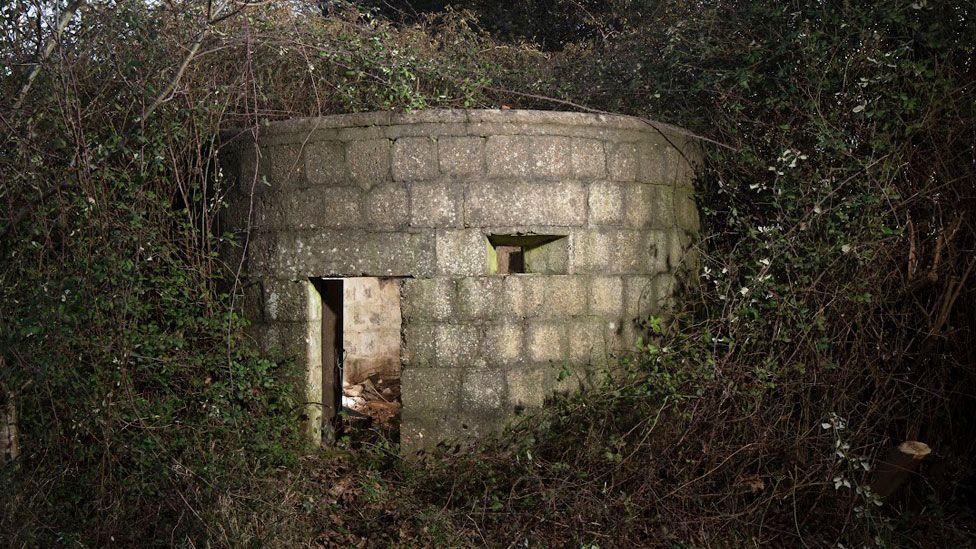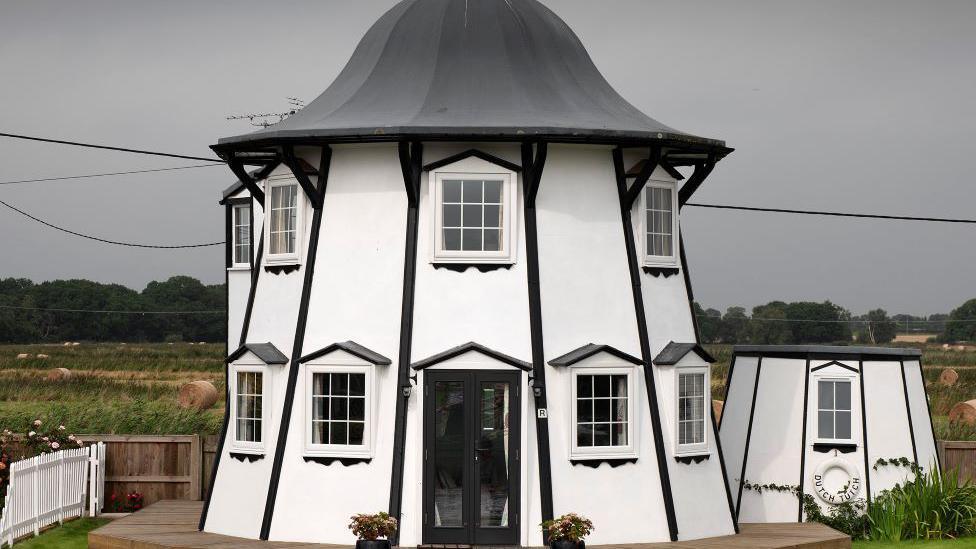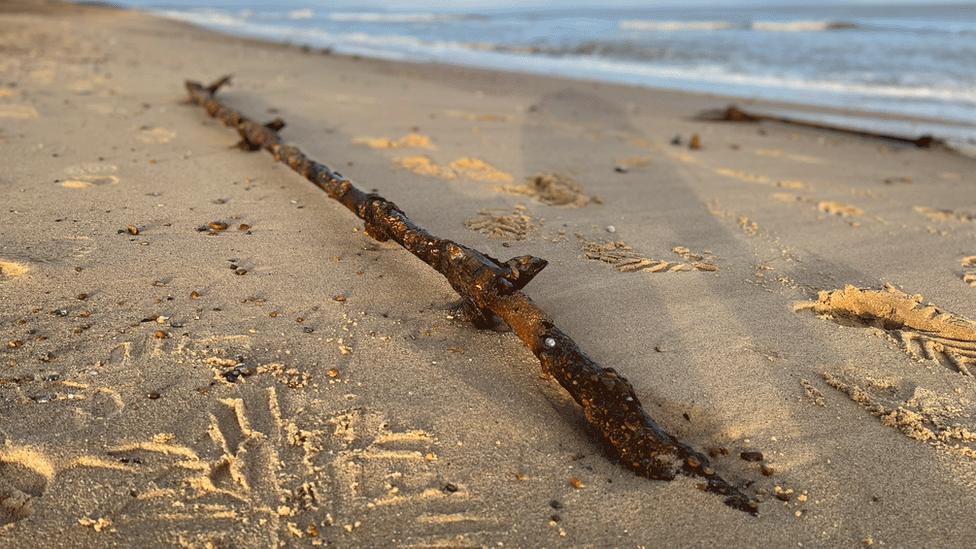Eight World War One pillboxes are Grade II listed

The pillbox at Bacton Wood is a rare example of a semi-circular World War One pillbox, according to Historic England
- Published
A rare semi-circular bunker-like structure is among eight World War One pillboxes in Norfolk that have been granted Grade II listed status.
The concrete buildings were built between 1916 and 1918, designed to protect a stretch of English coast from a potential German sea invasion, including the semi-circular one at Bacton Wood.
They still have their original steel doors, gun loop shutters and white-painted interiors, according to Historic England.
Its East of England regional director Tony Calladine said they were "a reminder of a time when determined communities prepared to defend Britain during the Great War".

One of two circular pillboxes at White Horse Common near North Walsham, which flanked the Edbridge Mill crossing
Listed buildings are buildings of special architectural or historic interest with legal protection, external.
All but one of the newly-listed pillboxes are in the North Walsham area and they are:
Two defending the Common Road and Bradfield Beck crossing point at Bradfield Common
A rare semi-circular pillbox at Bacton Wood, guarding a canal bridge
Two circular pillboxes at White Horse Common at the Edbridge Mill crossing
Two either side of Bacton Road, Little London, defending the canal bridge
The final pillbox is another circular one at Wayford Bridge, near Stalham.
The pillboxes were positioned along the River Ant and the North Walsham & Dilham Canal, external - waterways that could provided further defence in The Broads.

The pillbox at Wayford Bridge near Stalham was designed to protect the east side of Wayford Road
They are all slightly inland and were part of a network of pillboxes which were designed to "provide a barrier to invading enemy troops", said Mr Calladine.
Pillboxes were generally camouflaged against the landscape to hide the occupants from enemy view.
Most were installed with small holes in the walls called loopholes where weapons could be fired from.
The first pillboxes were built by the German army on the Western Front, but as the threat of invasion increased in Britain, they began appearing along the east coast of.
"The listing of these pillboxes recognises their historic significance and exceptional durability," Mr Calladine added.
Historic England hopes people will add their photographs and drawings of the pillboxes and share their stories to its Missing Pieces Project, external.
Get in touch
Do you have a story suggestion for Norfolk?
Follow Norfolk news on BBC Sounds, Facebook, external, Instagram, external and X, external.
- Published6 June 2024

- Published17 October 2024

- Published9 December 2023

- Published7 December 2022
